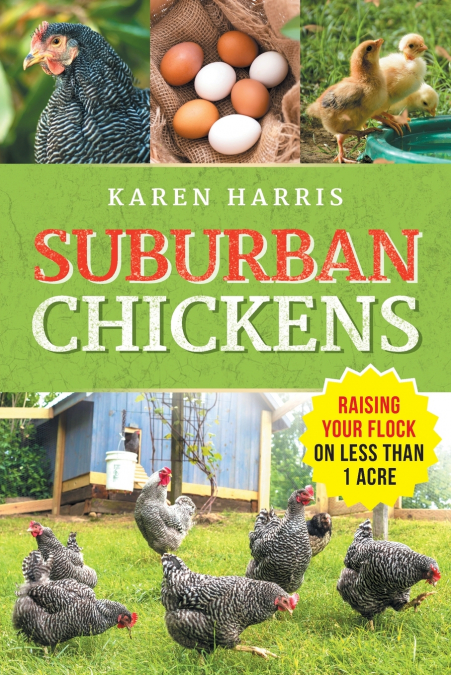
 Librería Perelló (Valencia)
Librería Perelló (Valencia)
 Librería Aciertas (Toledo)
Librería Aciertas (Toledo)
 Librería Elías (Asturias)
Librería Elías (Asturias)
 Donde los libros
Donde los libros
 El AlmaZen del Alquimista (Sevilla)
El AlmaZen del Alquimista (Sevilla)
 Librería Kolima (Madrid)
Librería Kolima (Madrid)
 Librería Proteo (Málaga)
Librería Proteo (Málaga)
Discover the joys and rewards of raising chickens in your backyard!Author Karen Harris used interviews with a half dozen experienced small-scale chicken farmers to create the ultimate 'how-to' book for managing a backyard flock.A TRULY comprehensive guide covering everything you NEED TO KNOW:Sourcing ChicksUnderstanding chicken terms and breedsDifferentiating between layers, meat birds, dual-purpose chickens, and bantamsWhen and where to get chicks: local hatcheries, mail-order, feed stores, local breeders, community exchange groupsPreparing for the arrival of chicks: setting up a brooder, providing heat, light, ventilation, quarantine, socializationRaising ChicksFeeding and watering chicks: chick starter, fresh water, treats, gritEnsuring proper warmth and ventilationMonitoring chick health and growth: antibiotics, injuries, illnesses, tracking growthTransitioning chicks to the coop: feathering, weaning from heat lamp, weather considerations, coop introductionHousing for Suburban ChickensTypes of chicken housing for small spaces: pre-made coops, custom-built coops, converted sheds, mobile coopsDetermining the ideal coop sizeEssential coop features: door, roosts, nesting boxes, predator protection, ventilation, natural sunlightAdditional desirable coop features: people door, exterior egg collection lid, feed tubes, electricityImportance of a well-designed chicken run and bedding material optionsFeeding Your FlockUnderstanding the digestive system and nutritional requirements of chickens: protein, carbohydrates, fats, minerals, vitamins, calcium, waterTypes and styles of chicken feed: starter, grower, finisher, layer; crumbles, pellets, mash, scratchSupplementing feed with treats and greens: fruits, vegetables, safe options, growing your own chicken foodImportance of oyster shells and distinguishing between oyster shells and gritConsiderations regarding lawn care and the interaction of suburban chickensProtecting Your Chickens from PredatorsIdentifying common predators in suburban areas: wildlife (raccoons, hawks, coyotes, etc.) and domestic (dogs, cats, humans)Deterrence strategies: fencing, netting, alarms, motion lights, locks, and latchesResponding to an attack: in-progress response, assessing injuries, regrouping afterwardUrban Chicken OrdinancesUnderstanding laws, regulations, ordinances, and homeowners’ associationsAddressed concerns: number of chickens, rooster bans, slaughter and free-range rules, nuisance complaints, coop placement and housing requirements, health codesFree-Ranging and ForagingBenefits of free-ranging: varied diet, better egg quality, active chickens, tastier meat, cleaner coop, reduced feed costs, insect control, mental stimulationManaging free-range time, protecting free-ranging chickens, drawbacks to consider: lawn chemicals, chicken poop, foraging risksWritten in an accessible and engaging style, each chapter is designed to enhance your knowledge and equip you with the tools necessary to succeed.